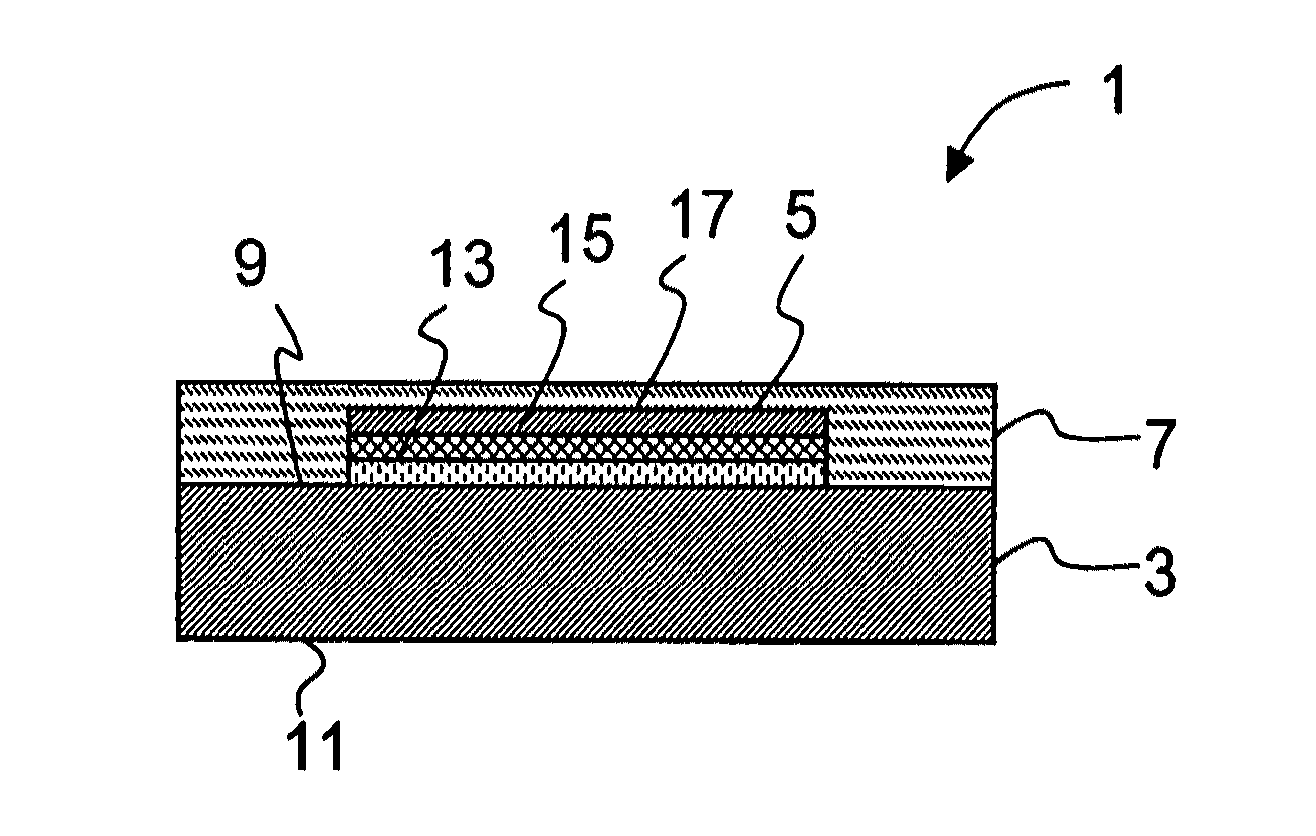Hermetic encapsulation of organic, electro-optical elements
a technology applied in the field of organic and electrooptical elements, can solve the problems of inability to extend the operating time of oleds to more than 5000 operating hours, limited service life, etc., and achieve the effect of reducing work function, effective protection against element degradation, and difference in work function
- Summary
- Abstract
- Description
- Claims
- Application Information
AI Technical Summary
Benefits of technology
Problems solved by technology
Method used
Image
Examples
Embodiment Construction
[0082]FIG. 1 shows a diagrammatic cross-sectional view through a first embodiment of an OLED according to the invention, which is denoted overall by 1. The OLED comprises a substrate 3, to which an OLED layer structure 5 is applied on one side 9. The layer structure 5 comprises a first conductive layer 13, a layer 15 which includes at least one organic, electro-optical material, and a second conductive layer 17. The layer structure 5 of the OLED is covered with a layer 7 with a vitreous structure and has been applied by means of PVD and / or CVD coating. On account of its low permeability, the layer 7 creates a hermetic encapsulation of the OLED layer structure 5, in particular with respect to small gas molecules from natural atmosphere, such as water or oxygen. In this way, the degradation of the OLED according to the invention as a result of chemical reactions between reactive gases and materials of the layer structure is greatly reduced, and this manifests itself in an increased se...
PUM
| Property | Measurement | Unit |
|---|---|---|
| thicknesses | aaaaa | aaaaa |
| thickness | aaaaa | aaaaa |
| thickness | aaaaa | aaaaa |
Abstract
Description
Claims
Application Information
 Login to View More
Login to View More - R&D
- Intellectual Property
- Life Sciences
- Materials
- Tech Scout
- Unparalleled Data Quality
- Higher Quality Content
- 60% Fewer Hallucinations
Browse by: Latest US Patents, China's latest patents, Technical Efficacy Thesaurus, Application Domain, Technology Topic, Popular Technical Reports.
© 2025 PatSnap. All rights reserved.Legal|Privacy policy|Modern Slavery Act Transparency Statement|Sitemap|About US| Contact US: help@patsnap.com



